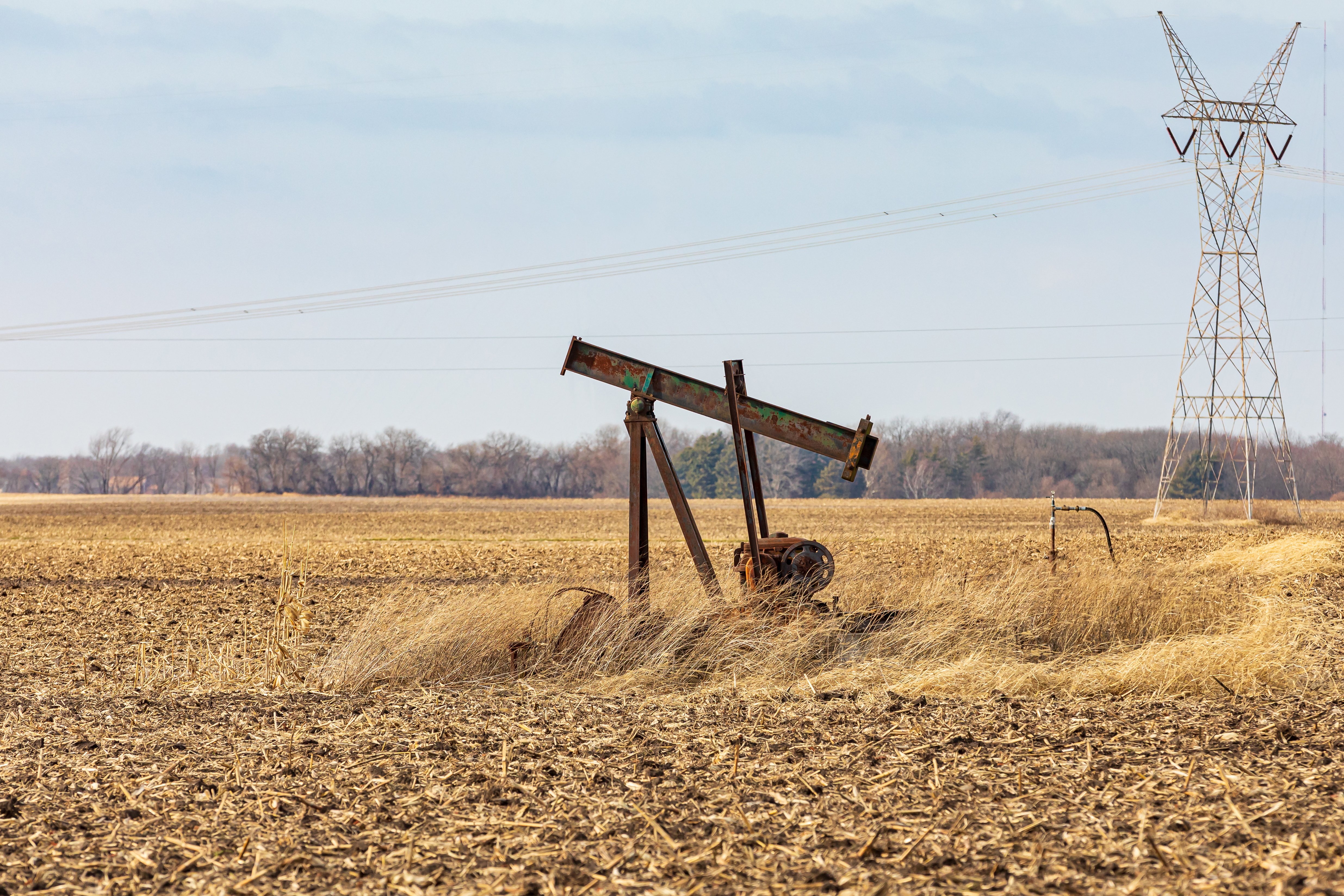A New Way Forward for Orphaned Oil and Gas Wells
EES Professor Tao Wen collaborates on a project evaluating the environmental risks and opportunities for managing millions of abandoned oil and gas wells.

College of Arts and Sciences (A&S) Professor Tao Wen recently teamed up with international researchers to create a framework to help governments in the U.S. and around the world assess and prioritize remediation strategies for orphaned oil and gas wells.
These inactive wells represent environmental risks since they have the potential to contaminate water supplies, degrade ecosystems and emit methane and other air pollutants that are harmful to human health. Plugging the wells also offers various potential environmental opportunities such as underground storage of carbon dioxide and hydrogen, or the development of geothermal energy systems.
Dealing with Orphaned Wells
There are hundreds of thousands of orphaned oil and gas wells in the U.S. and tens of millions around the world. Since the former owners of these abandoned wells often cannot be traced, the responsibility for plugging the wells, which is where the well bore is sealed to prevent contaminants from migrating between underground rock layers, typically falls to governments who may need further information on how best to manage them.
In November 2021, as part of the Bipartisan Infrastructure Law (BIL), the U.S. government allocated $4.7 billion to plug orphaned oil and gas wells across the country.
“While this sounds like a lot of money, we estimate that the costs of plugging the documented orphaned wells in the U.S. will exceed this sum by 30-80% or possibly more,” says Mary Kang, an assistant professor in the Department of Civil Engineering at McGill University and the senior and lead author of the paper published in Environmental Research Letters which lays out some of the environmental risks and opportunities of various remediation strategies, as well as the information that still needs to be gathered. “We need to rapidly develop a framework and environmental monitoring datasets to prioritize wells for plugging, since tens of thousands of wells will be plugged in a matter of years.”
A Team Approach to Data Collection
Tao Wen, who is an assistant professor in the Department of Earth and Environmental Sciences at Syracuse University, collaborated with Kang and the team by offering a comprehensive list of opportunities and challenges abandoned and orphaned wells present with respect to water quality. Wen and Kang first met at the Shale Network workshop, which is a conference where stakeholders of the oil and gas industry use data as a vehicle to address environmental concerns. Through that collaboration, Wen and Kang realized the critical need for a holistic assessment of the issues related to orphaned and abandoned wells due to the air and water quality problems they present.

While Kang’s research involves estimating methane emission from active and abandoned wells, Wen focuses on the environmental impact of methane leakage and emission on water quality in both surface water and groundwater. He explains that unplugged wells sometimes release methane into water, which can mobilize toxic elements such as arsenic and generate toxic species including sulfide. In addition to released methane being a greenhouse gas once getting into the air, it is also an explosion hazard in confined space.
“With respect to water quality, as it stands right now, only a small portion of these abandoned and orphaned wells are monitored for their potential impact on nearby groundwater and surface water quality,” says Wen. “In particular, groundwater and surface water quality data are available within 1 kilometer (approximately ½ mile) of only 8% and 7% of documented orphaned and abandoned wells. This warrants a need of more widespread monitoring of water quality around abandoned wells.”
An Issue of Proximity
To gain a sense of the larger impacts of these wells and help inform government policies, the researchers analyzed data for over 80,000 documented orphaned oil and gas wells in the U.S. while at the same time looking at available socioeconomic, environmental and natural resource data. Hundreds of thousands more of these orphaned wells are spread across the country.
They found that over 4.6 million Americans (or about 13% of the nation’s population) live within a half mile of one of the more than 80,000 documented orphaned gas or oil wells in the U.S. Among this population, at a national level, there was an over-representation of Hispanic/Latino and Native American populations. The researchers also found that over one third of these wells are a half mile from a domestic groundwater well, though they note that there is generally insufficient data about the potential health risks associated with orphaned wells.
“Recent studies have identified air, water and human health hazards of orphaned oil and gas wells, however the literature is not yet extensive enough to quantify the risks of this legacy infrastructure across the country,” adds Seth Shonkoff at PSE Healthy Energy.
Environmental Opportunities
The subsurface is a natural resource like any other. Many present-day and future applications will require access to subsurface reservoirs that are not compromised by oil or gas leakage. For example, the researchers found that most of the documented orphaned wells (91%) are in areas where geologic formations offer subsurface storage potential for carbon dioxide, hydrogen, and natural gas, as long as they meet security standards. The researchers also suggest that instead of restoring the surface to pre-development conditions, the land could potentially be repurposed to produce wind power, since almost 75% of the orphaned wells are in areas with top wind capacity. In addition, approximately 33% of orphaned wells are in regions, such as North Dakota, that are considered moderately favorable to geothermal systems and 1% are found in areas such as Utah, Colorado and California that are considered most favorable for geothermal development.
Portions of this article have been adapted from a press release distributed by McGill University on June 20, 2023.
The study
“Environmental risks and opportunities of orphaned oil and gas wells in the United States” by Mary Kang et al was published in Environmental Research Letters
Featured
Tao Wen Assistant Professor: Hydrogeochemistry, Environmental Data Science, & Noble Gas Geochemistry
